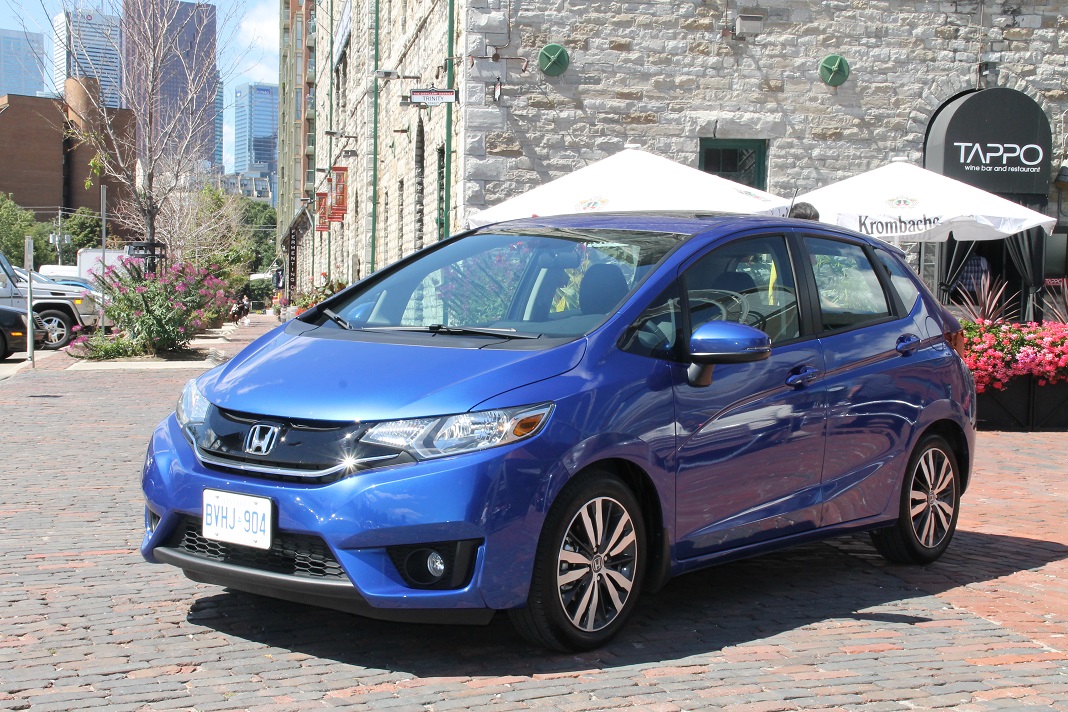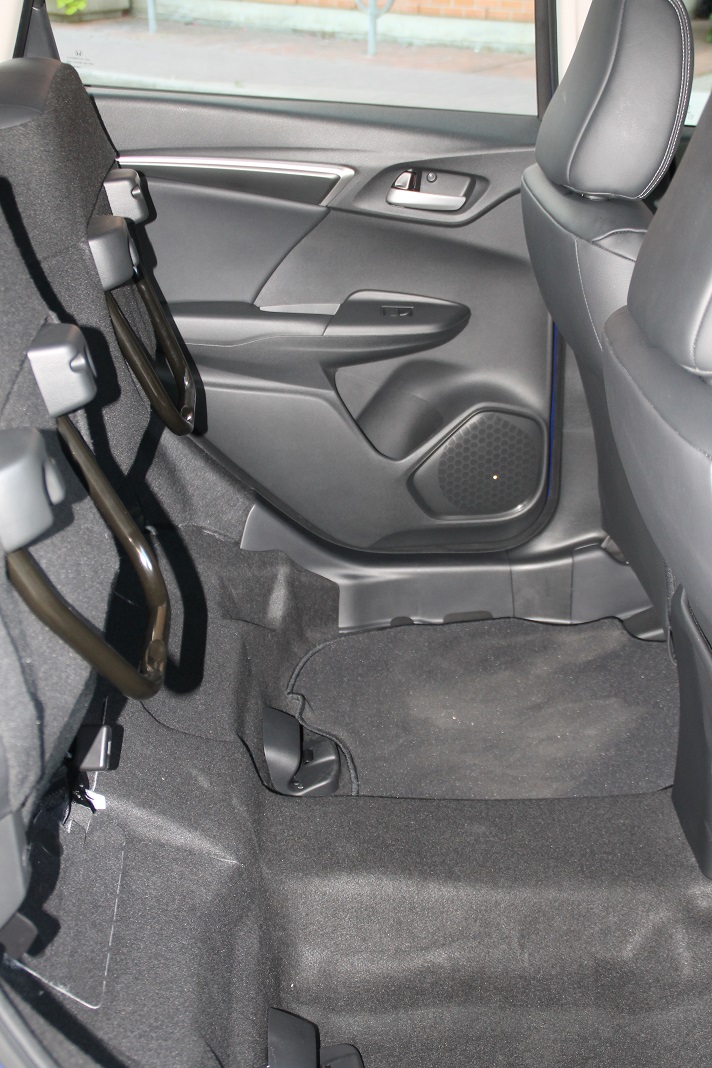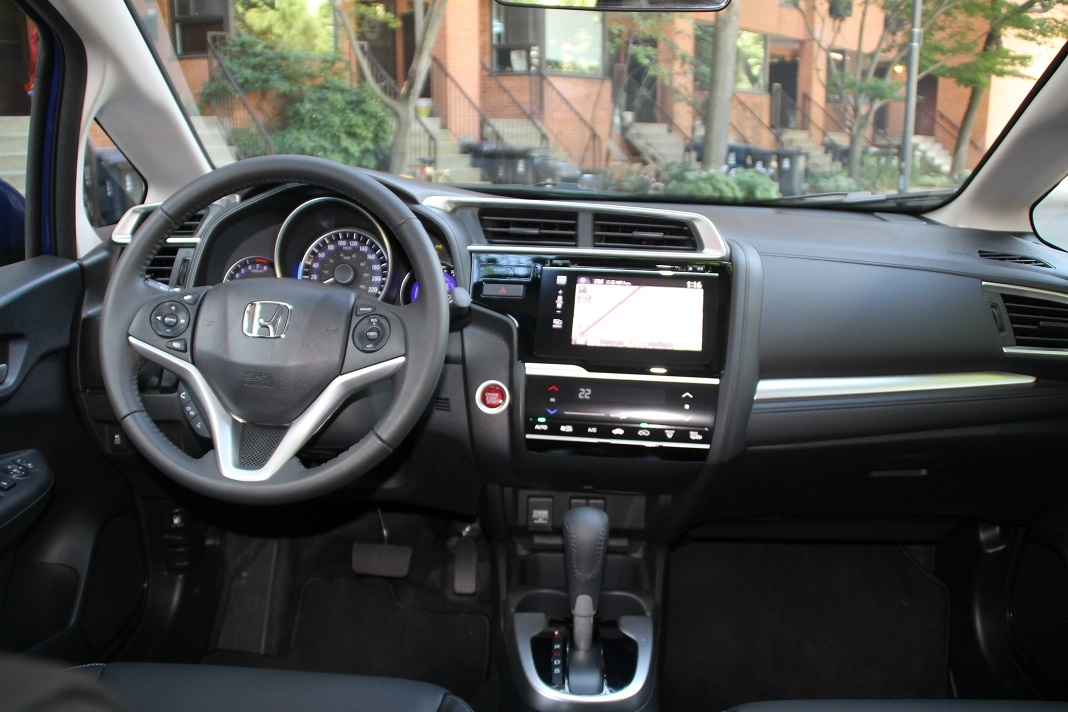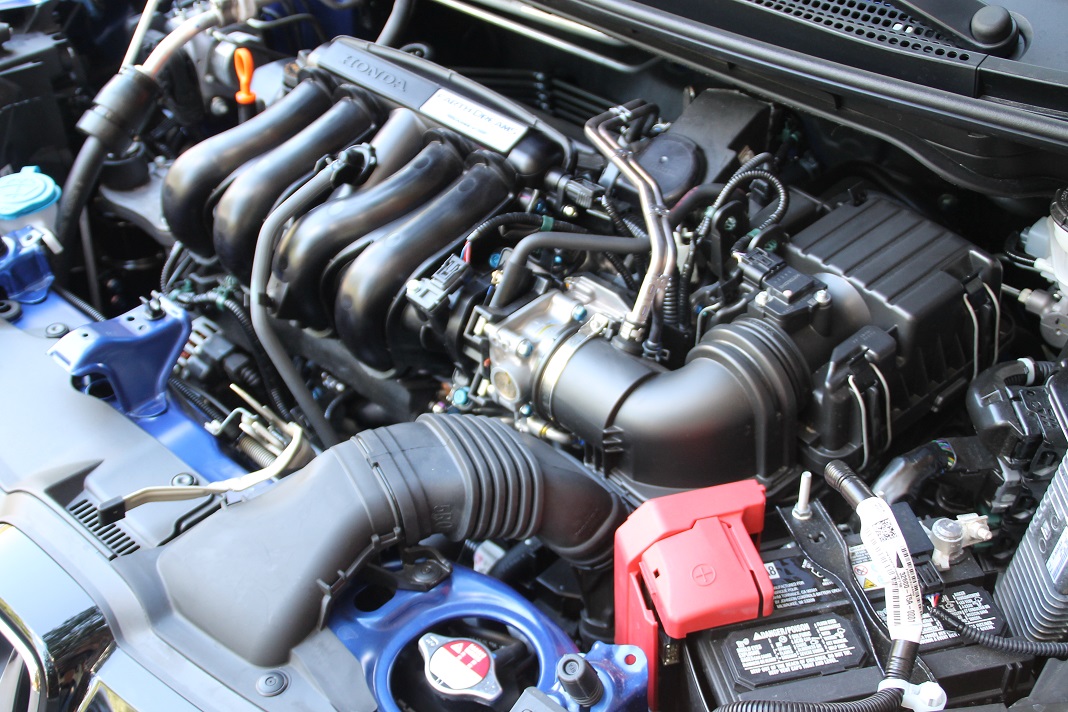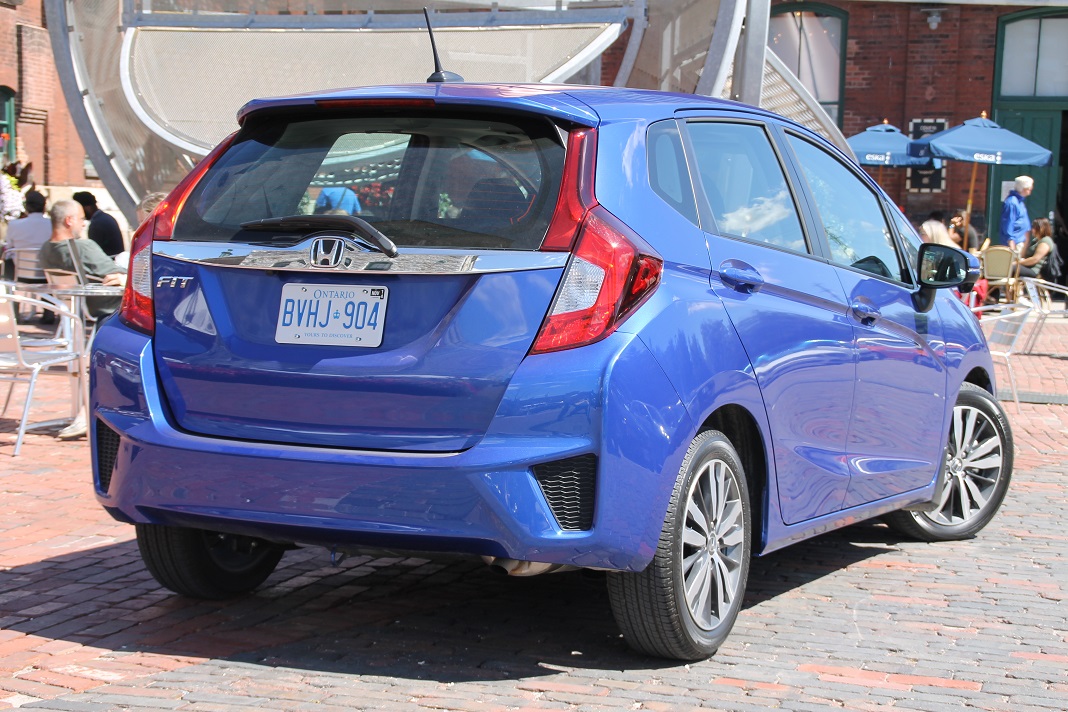First Drive - 2015 Honda Fit: a versatile, value-laden hatchback
- Written by David Taylor
- Published in CAR REVIEWS
- font size decrease font size increase font size
- Be the first to comment!
Available in showrooms across Canada right about now, the third generation 2015 Honda Fit is aimed squarely at two primary demographics: the “boomer”, aged 50 – 70 and “gen-Y”, aged 25-35. Why, or more to the point, how? Three key factors; a sophisticated cockpit environment; a generally high-quality feel to all interior materials including seating fabrics, upholstery and a soft-touch dash; and, last but by no means least, the overall versatility of this car.
Canadians love hatchbacks – either in the three-door or better yet, a five-door variety. It could be argued that with this all new vehicle, Honda may have created or at least improved upon a category not seen on these shores in many years – the “subcompact minivan”!
You see, Honda’s engineers have been hard at work maximizing space for passengers and cargo, without sacrificing either comfort or more importantly, safety. The wheelbase has increased by 1.2 inches, yet overall, the car is 1.6-inches shorter and the inside rear seat leg room grew by an impressive 4.8 inches to 39.8 inches.
This came at the sacrifice of four cubic feet of cargo volume – which is still a very respectable 16.6 cubic feet (or 1,492 litres). With the rear seats folded, the total is 52.7 cubic feet. But wait, there’s more! There is a remarkable and novel feature back here referred to as “Magic Seats.” The rear bench seat actually folds vertically to create a larger volume to carry more stuff securely. While the biggest news is likely the rear space utilization, the front area is still good by almost every standard. All in all, an extra 4.9 cubic feet of passenger space was netted, and most important dimensions are improved for a more spacious cabin.
How spacious you ask? Well, at the recent drive event in downtown Toronto and after dinner and an adult beverage or two, some auto journos decided to show Honda that the Fit could accommodate more than suitcases and bean bags. Without any major effort, 11 of us crammed into the vehicle and all doors were secured. For the record, no shrinking violets were harmed in this endeavour!
Body lines are rounded from the previous almost box-like Fit. The new car does have appeal and within the sub-compact category, from an outward appearance standpoint, only does it now blend with its competition. Aerodynamic improvements were incorporated into the exterior folds and creases to help with overall fuel economy – always a benefit. The front-end has been improved, too. Halogen headlights and daytime running lights merge nicely – in contrast to the rear where protruding, yet shapely, high-visibility rear LED tail lights take their place.
Let’s go back inside, for a moment. The driver interface employs an almost uniform approach for the category including for the base DX, a 160-watt AM/FM/CD audio system with four speakers, a five-inch colour LCD screen and a USB. For the EX and up, much more connectivity includes a seven-inch HondaLink infotainment touchscreen, and in either case, you get a functional interface. The value for money model is on the LX trim, which Honda anticipates will be the leader for this marque. Exclusive for Canada is that aforementioned seven-inch display and heated front seats. In addition a continuously variable transmission (CVT) is available, as is an ECON setting, cruise control and steering wheel mounted audio controls, manual air-conditioning and body-coloured door mirrors and handles.
Pricing for the entry level DX with 6MT is $14,495 and tops out at $22,595 for the EX-L with navigation. The LX starts at $17,295 or $18,595 – depending upon your choice of manual or CVT.
All trims come standard with a 1.5-litre direct injected DOHC i-VTEC generating 130hp and 114lb-ft torque. Mileage, based on the now new industry standard five-cycle testing is 7.0 city, 5.7 highway and 6.4l/100kms when equipped with the CVT and 8.1, 6.4 and 7.3 with the manual transmission – on the LX trim. Honda makes claims for improved performance – not just for the stronger engine, but an overall stiffer chassis, suspension, and reduced noise – and in a road test involving highway, city and rural conditions, the Fit does live up to these.
While not a huge fan of CVTs generally, it should be noted that Honda's CVT does apparently default to taller ratios conspired to deliver maximum economy at the expense of acceleration. However, if nudged gently, the revs do climb higher to balance out and match supply with demand. Honda’s six-speed manual does quite well too, but highway speeds in excess of 120kph has the engine busily droning at just over 3,500 rpm.
Rounding corners with the stiffer chassis – enabling also a five-star safety rating and Insurance Institute of Highway Safety Top Safety Pick – you’ll notice you can retain good control while moving at respectable speeds.
Succinctly, the Fit does what you’d expect it to do. Honda says one of the net effects of the more-rigid chassis with longer wheelbase is to contribute to a feeling of “oneness” between the car and its driver. During our test drive, this was not immediately obvious. A longer test is in order. But to be clear, driving the 2015 Fit will fill any driver with confidence since it is quite surefooted in a straight line, or rounding bends.
On the up-scale EX and EX-L trim, Honda has added their LaneWatch camera on the passenger side mirror – a feature I personally would like to see not only extended through every Honda line, but also to every major vehicle manufacturer out there. While many, including myself have “argued” that proper positioning of every mirror in a vehicle will minimize blind spot areas, this one feature could go a long way to reduce accidents on our roads and highways by providing proof positive of approaching traffic.

